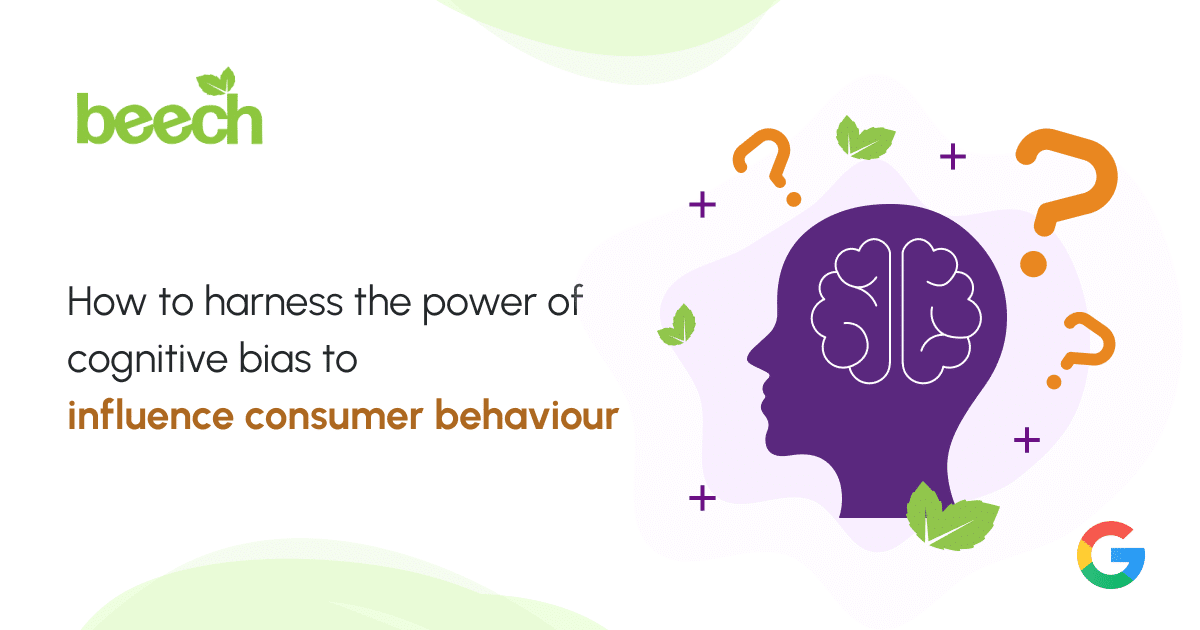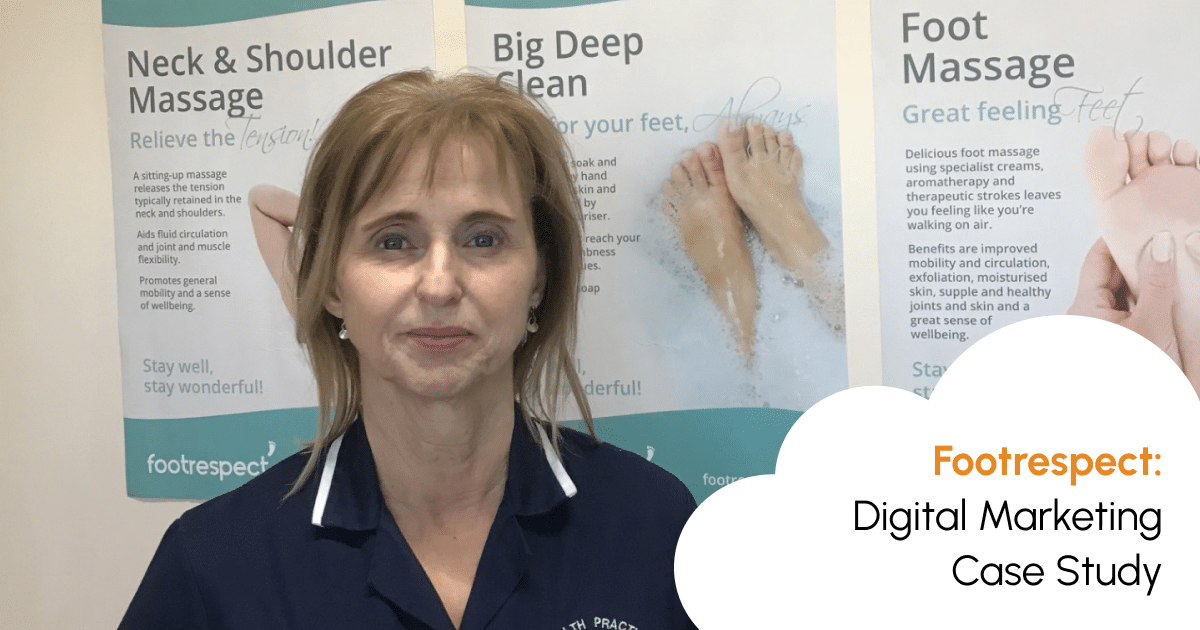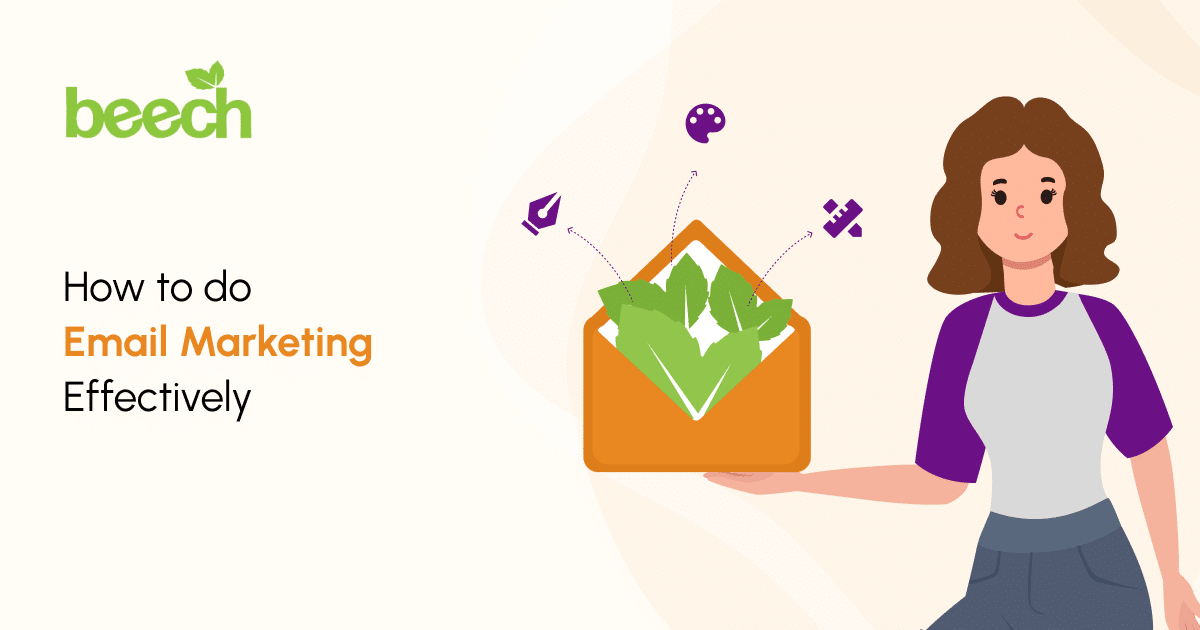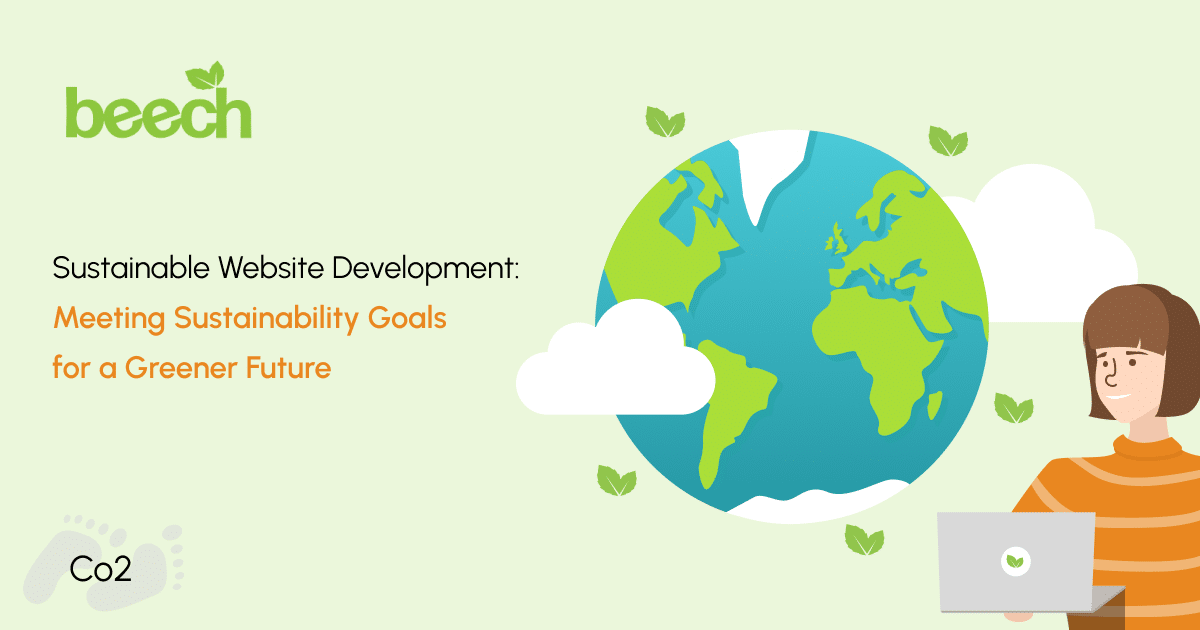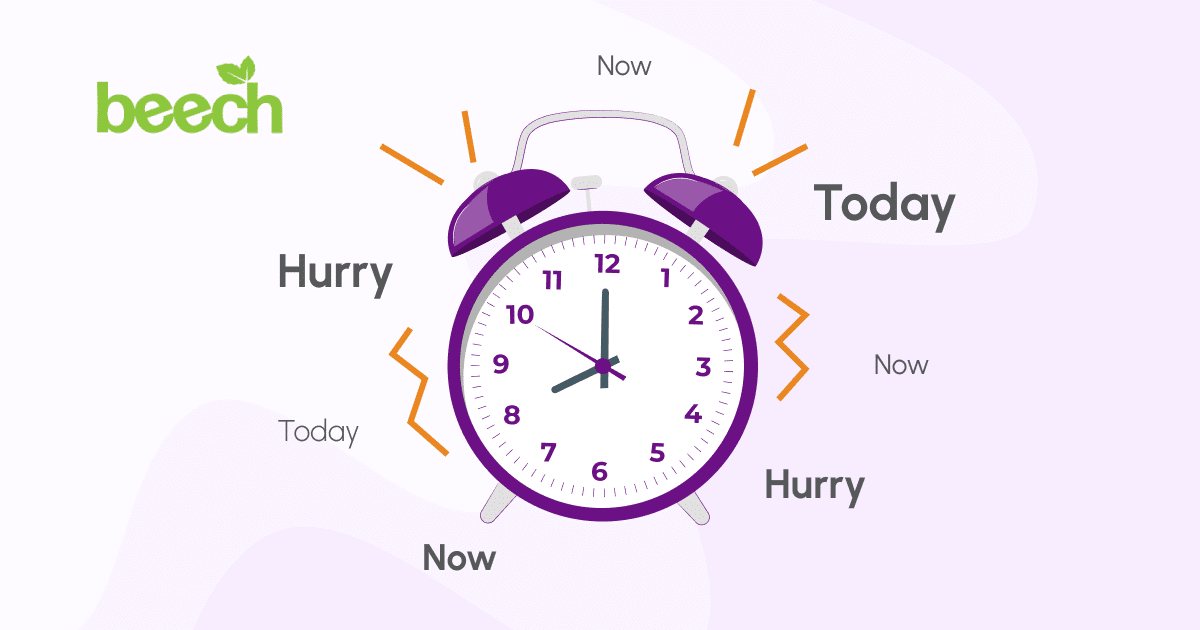By understanding how people think! The way we make decisions has a huge impact on reasoning when choosing a product or service. Understanding cognitive bias means businesses can tailor marketing strategies to successfully target specific audiences, capture their attention and increase the chance of a conversion.
If you follow us on social media, you may have spotted a theme in our Summer Sizzler business tips…
We’ve been sharing key insights from Think With Google’s research into the ‘Messy Middle’ and the online decision-making process. There are many different factors behind the choices our audience makes, but this research has helped identify some of the most persuasive techniques.
In this blog, we’ll cover 5 key consumer biases and how businesses can best use them in their marketing to drive traffic and conversions online.
The Power of Now
How long does a customer wait before making a purchase decision?
According to research by Cambridge University, not long at all!
In fact, the research suggests that it could take ‘as little as a third of a second’ for a customer to make a choice when provided with the opportunity to make a purchase.
Think With Google’s study supports this. The Power of Now, one of the consumer biases that determine how human beings are influenced in their decision-making, states that our proposition weakens the longer people are made to wait. The longer they wait, the more risk there is of the sale being lost to competitors.
How does this affect our online marketing strategy?
When creating effective digital marketing campaigns, it’s important to consider the customer journey and how our audience navigates the sales funnel to purchase our products or services.
By closing the gap between a trigger and a purchase, we can simplify that journey and reduce the potential amount of time a customer is exposed to competition. From this, we can therefore influence our target audience towards a conversion.
Ways of doing this include:
- Adjusting content to include trigger words
- Using words like ‘NOW’ to add immediacy to calls to action, content on websites, social media posts and even Ads can help push customers into feeling like they need to act and understand what is needed of them, whether that’s requesting information, adding a product to their basket or filling out a contact form enquiry.
- Using words like ‘NOW’ to add immediacy to calls to action, content on websites, social media posts and even Ads can help push customers into feeling like they need to act and understand what is needed of them, whether that’s requesting information, adding a product to their basket or filling out a contact form enquiry.
- Offering a seamless online user experience
- By reducing the amount of time visitors to our website or social media posts need to take to purchase a product or enquire about our services, we can prevent the risk of them not completing a conversion or choosing our competitors.
- By reducing the amount of time visitors to our website or social media posts need to take to purchase a product or enquire about our services, we can prevent the risk of them not completing a conversion or choosing our competitors.
- Offering instant results
- By utilising the likes of next-day delivery, instant downloads or instant appointment booking, customers feel the immediate effect of their choice and will be more encouraged to make a similar decision in the future.
- By utilising the likes of next-day delivery, instant downloads or instant appointment booking, customers feel the immediate effect of their choice and will be more encouraged to make a similar decision in the future.
Scarcity Bias
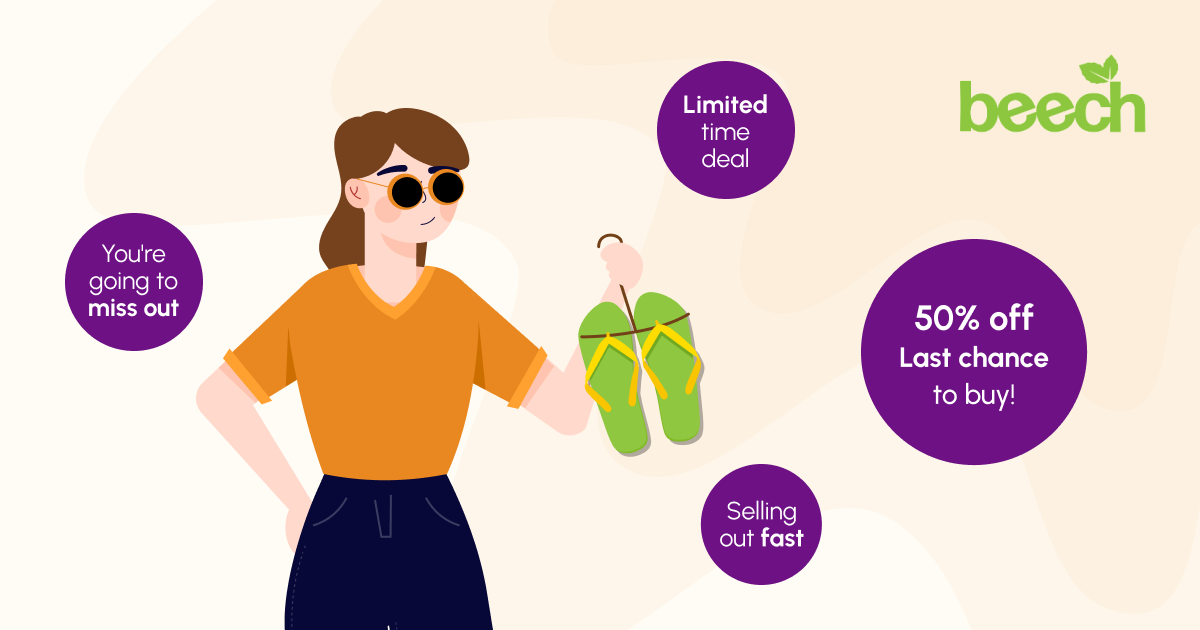
Have you ever impulsively purchased something in a Black Friday sale? Or grabbed the last tickets available at a popular event?
Then you’ve most likely been influenced by scarcity bias.
This bias plays on a customer’s fear of missing out, or FOMO, as it’s commonly known online. Businesses using scarcity bias techniques in their marketing create a focus on the rare and limited products or services on offer, encouraging customers to buy before it’s too late.
The fear of missing out on a great deal, a limited product or even getting involved in a one-off event can greatly motivate buyers to make a decision.
Scarcity bias suggests that these types of limited availability products and services are more desirable to customers, invoking FOMO and speeding up the decision-making process.
So, how can businesses use it?
- Time limited offers and discounts on products or running flash sales on e-commerce websites
- Offering rare and exclusive products
- Notifying customers when products are low on stock
- Running a limited time service that appeals to the needs of your audience
A business that does this well is the sustainable beauty company, The Body Shop, who use social media to advertise limited-edition products and allow customers to access them easily with a direct link to them via their profile.
By implementing this bias into our marketing strategy and creating immediate reactions, we can use FOMO to our advantage and encourage more conversions. Try it out in your next campaign or get in touch with us to integrate into your website content!
Authority Bias
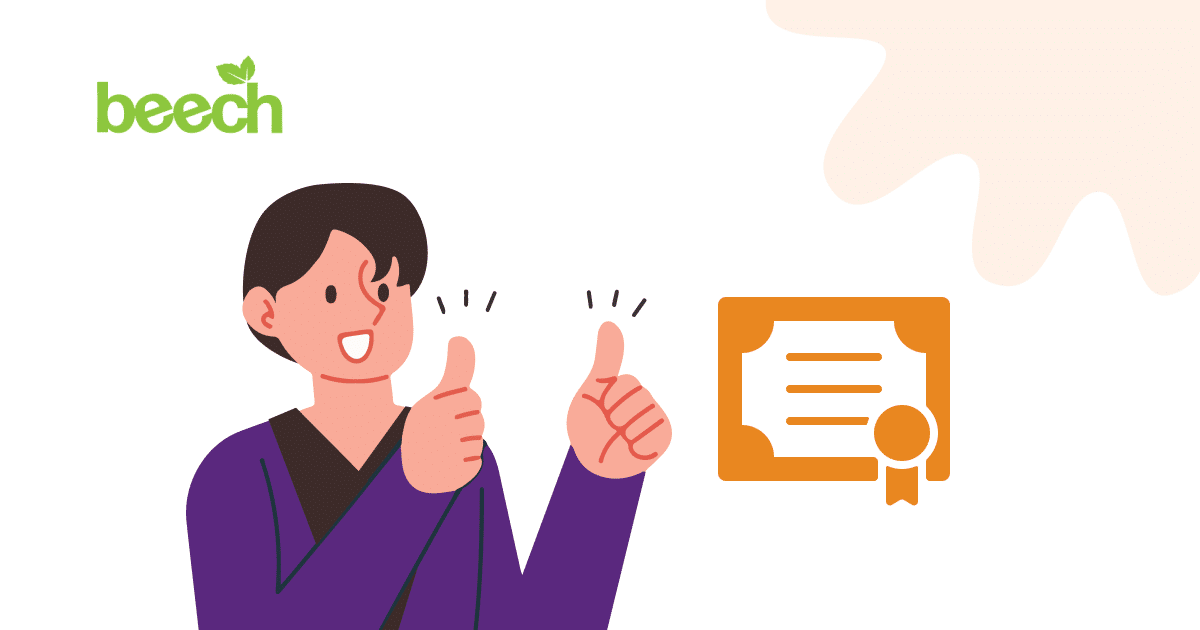
If we had the choice between a Digital Marketing expert or a Baker to improve our search engine ranking online, whose advice would we more likely choose to listen to?
If you’re choosing an expert in digital marketing, it’s because of Authority Bias.
While some base their choices on reviews and word of mouth (more on this later in the blog), authority bias suggests that industry experts or sources perceived as authoritative make a product more desirable.
For example, the eco-friendly brand Colgate uses the slogan ‘#1 dentist recommended*’ on their website, capturing their audience’s attention by using the words of experts to validate their product.
Why is this relevant?
Our target audience is likely to search for reliable sources to inform decisions about working with or buying from us. Because of this, it’s up to us to demonstrate our credibility, using a range of methods, and authenticate our industry experience and value to those who want to purchase our products or services.
How can we do this?
Businesses who want to persuade their customers with this bias both online and offline should consider the benefits of the following elements in their marketing strategy:
- Accreditations
- Expert Testimonials
- Industry Qualifications
- Celebrity Endorsements
- Awards
While they may seem like simple additions, such as a logo sitting in a website footer, or a short recommendation written up on LinkedIn, they can add significant value to the business and its offering to target audiences.
Ask us today about adding these elements to your website content.
The Power of Free
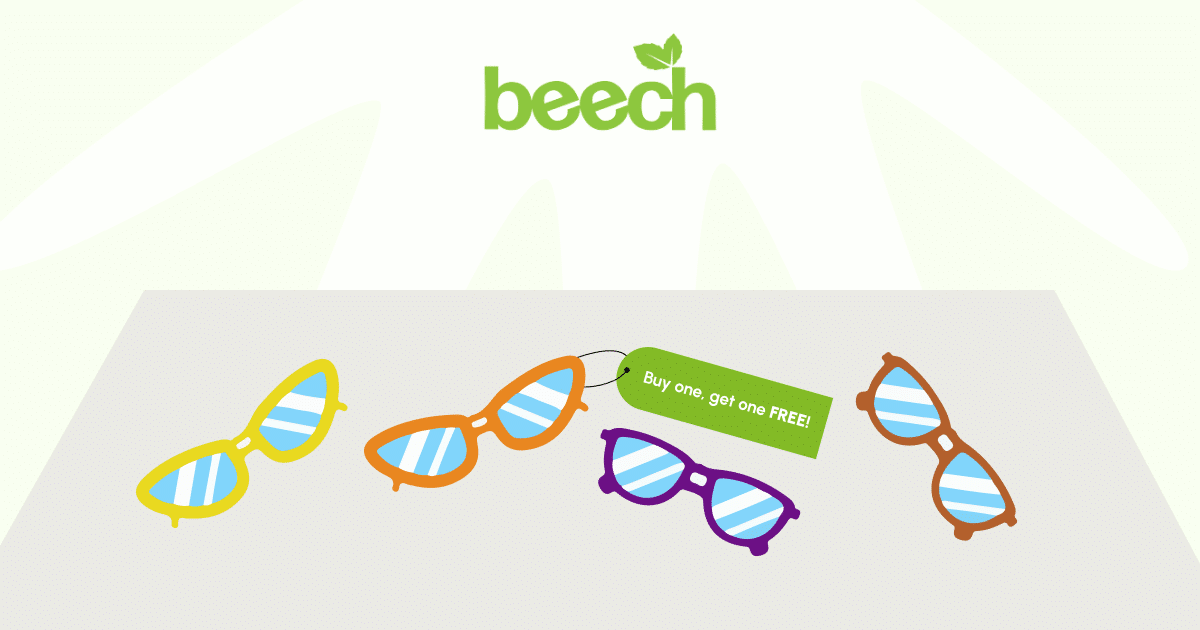
Have you ever been influenced by a BOGOF or ‘Buy One Get One Free’ sale?
A popular technique for many businesses, especially those offering products or services via an e-commerce website, the Power of Free bias suggests that a product offering an extra discount, or a free gift with its purchase, may be preferred to another that doesn’t ensure the same return.
When targeting our audience online, the right discount or freebie on a product they’re interested in could be the difference between a conversion or an abandoned basket.
One way we’ve seen this in practice is with offers for customers with products left in their carts. An email to the customer with outstanding basket items offering a discount or free product, if they finalise the sale, can help to reduce the number of unfinished sales on a website.
Customers are more likely to find value in services that appear to offer more for the money. So, a free service or product may just sway them.
We even use this ourselves! Our Free Website Healthcheck is an example of a free, no-obligation service that we hope will encourage business owners to take a closer look at their website and marketing strategies. With the extra free service, we can offer valuable insights without customers paying a penny! Feel free to request one here.
Bonus Bias: Social Proof
A good reputation can be the key to winning over audiences. Social proof suggests that even a more expensive product is preferred by customers if it has received a lot of positive feedback, than one that is identical, but with fewer or no reviews.
It also suggests that customers often base their choices from verified online reviews or recommendations from others in their social network. This is like word of mouth, where we are more likely to use someone else’s opinion of a brand or product to determine if they’re going to be right for us, than our own.
To utilise social proof in marketing, take advantage of those positive reviews!
- Embed them on your website
- Post about testimonials on social media
- Encourage happy customers to spread the word, online or offline
- Incentivise customers to recommend a friend
Social proof can all make a difference to the perception of your brand by target audiences and could encourage more conversions.
We can help you embed Google reviews and add testimonials to your website here.
Using cognitive biases improves performance...
Human beings are pre-programmed to respond in certain ways, and this can be used to influence our audience into acting. No matter what the products or services on offer, there are a variety of techniques and methods to use to encourage a positive reaction and bring about a potential conversion.
Taking advantage of consumer biases can help us influence our target audience in the decision-making process, furthering our likelihood of them choosing us rather than the competition.
Talk to our expert team today for help with implementing these techniques into your marketing strategy.
